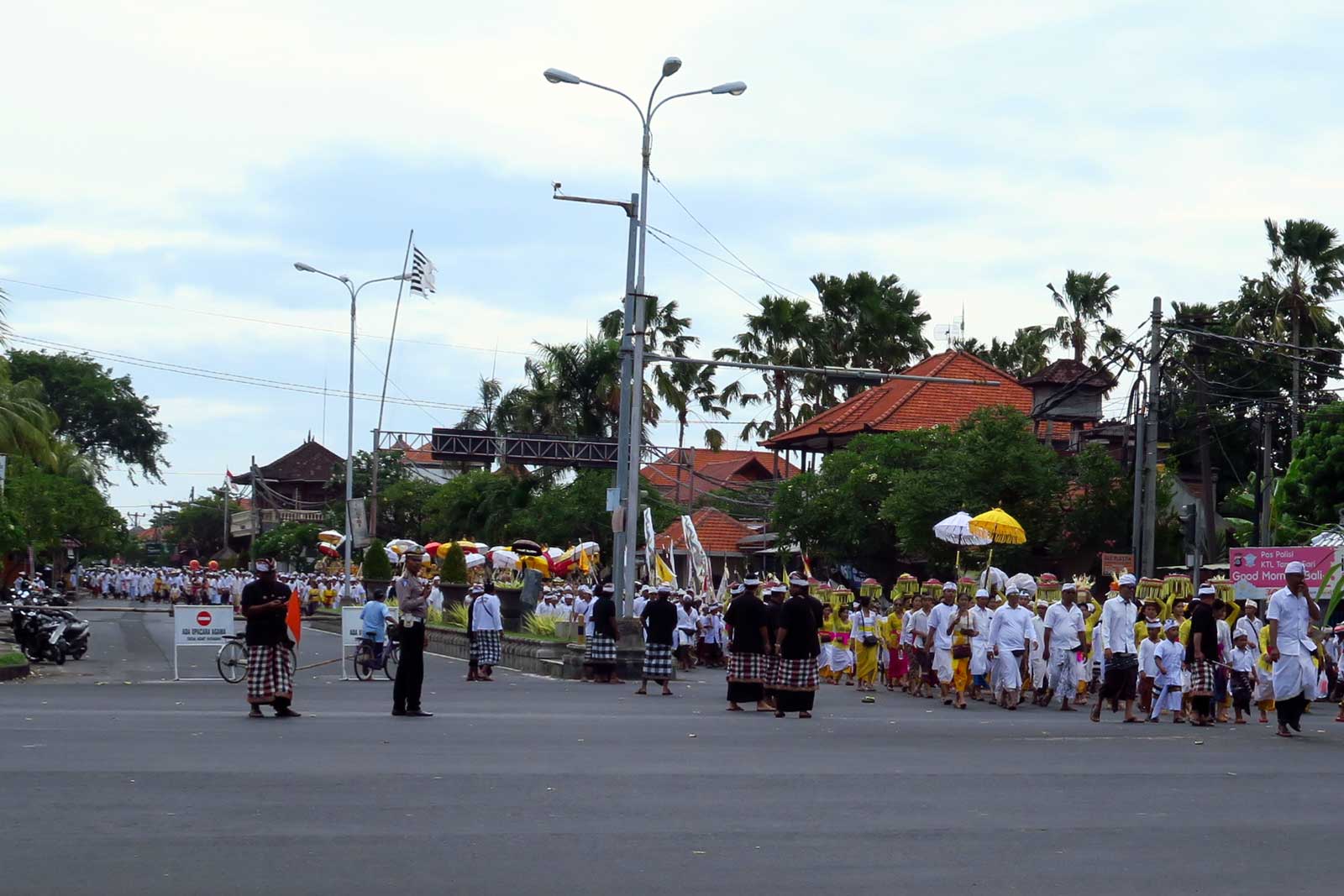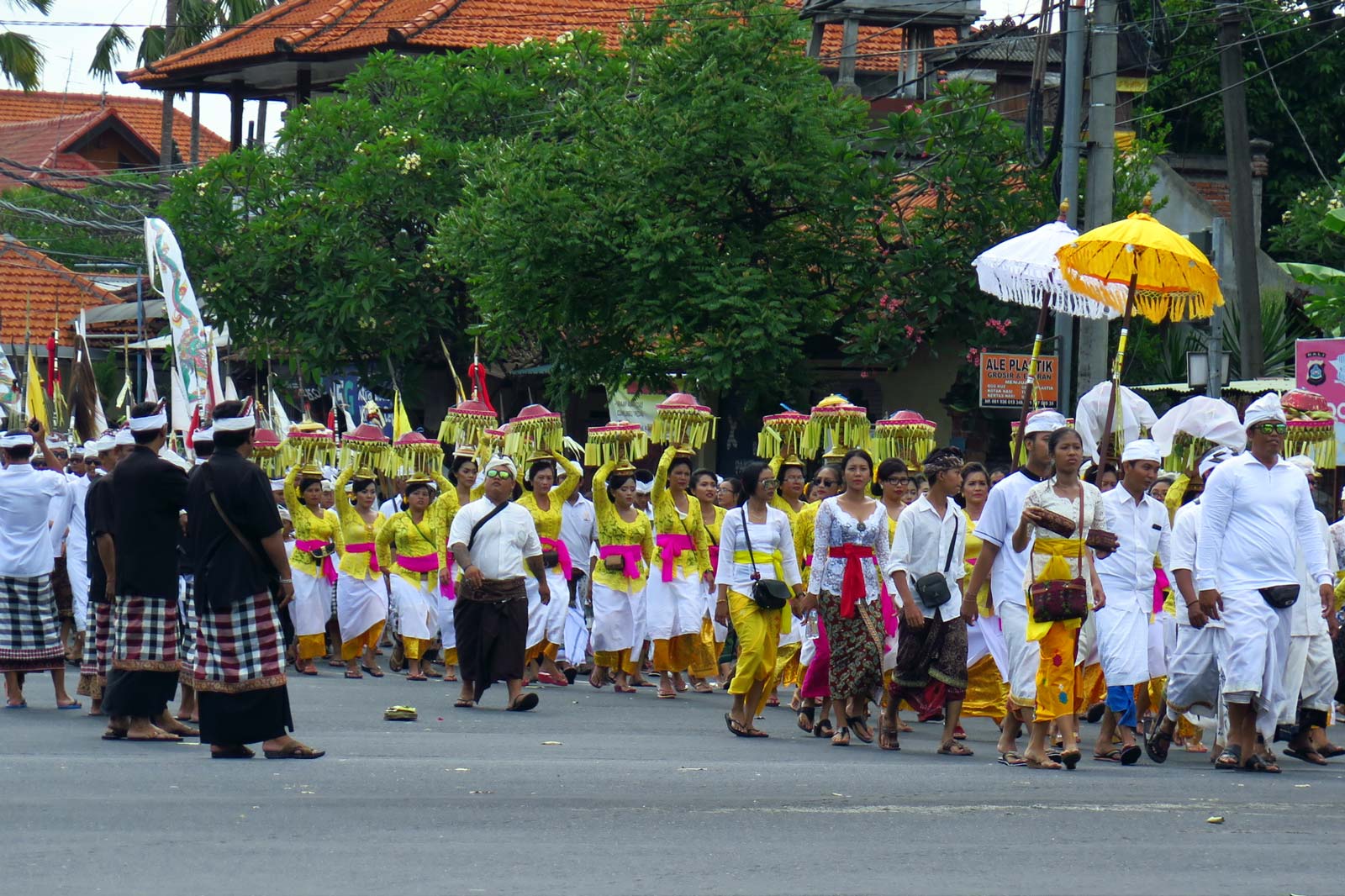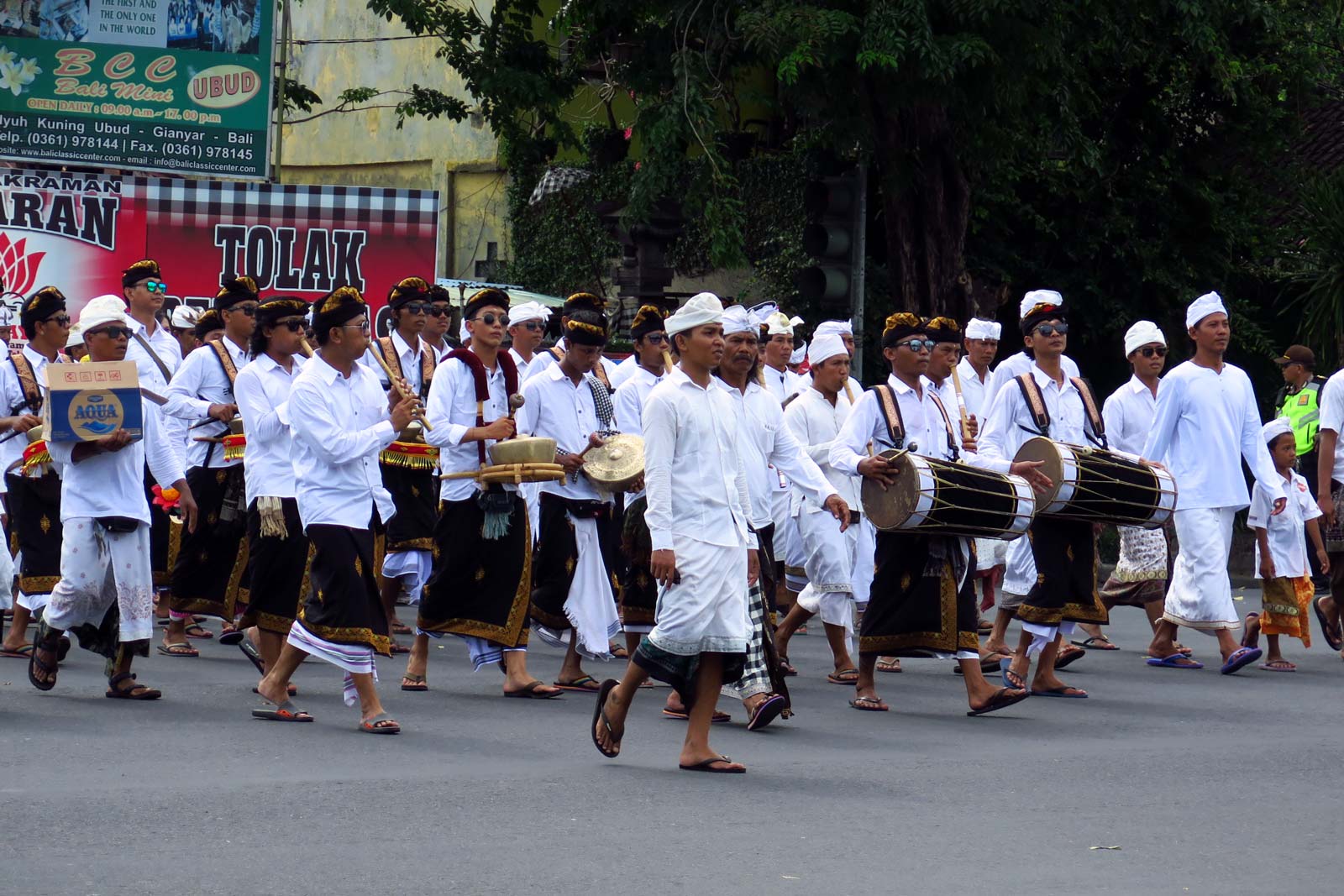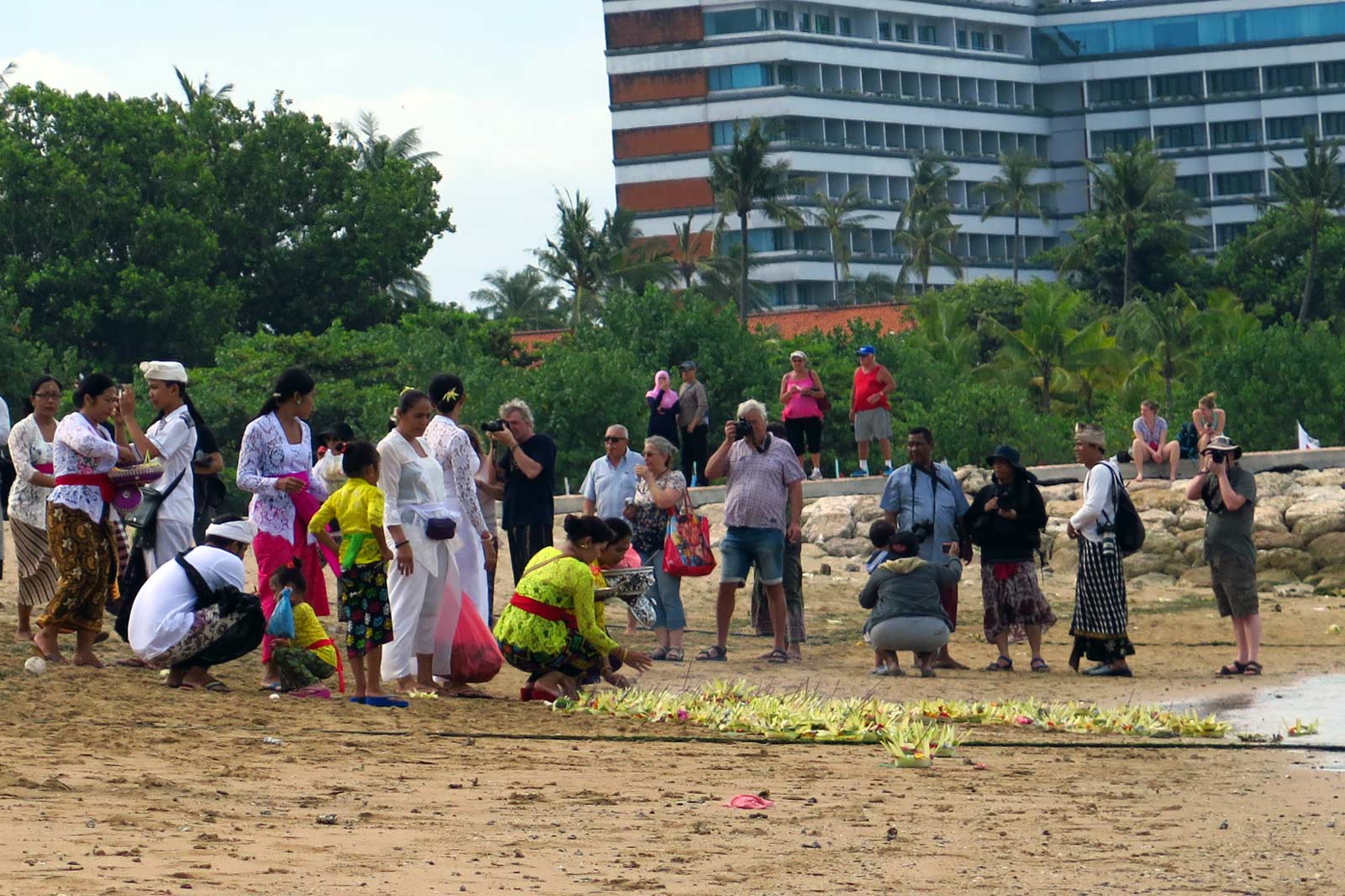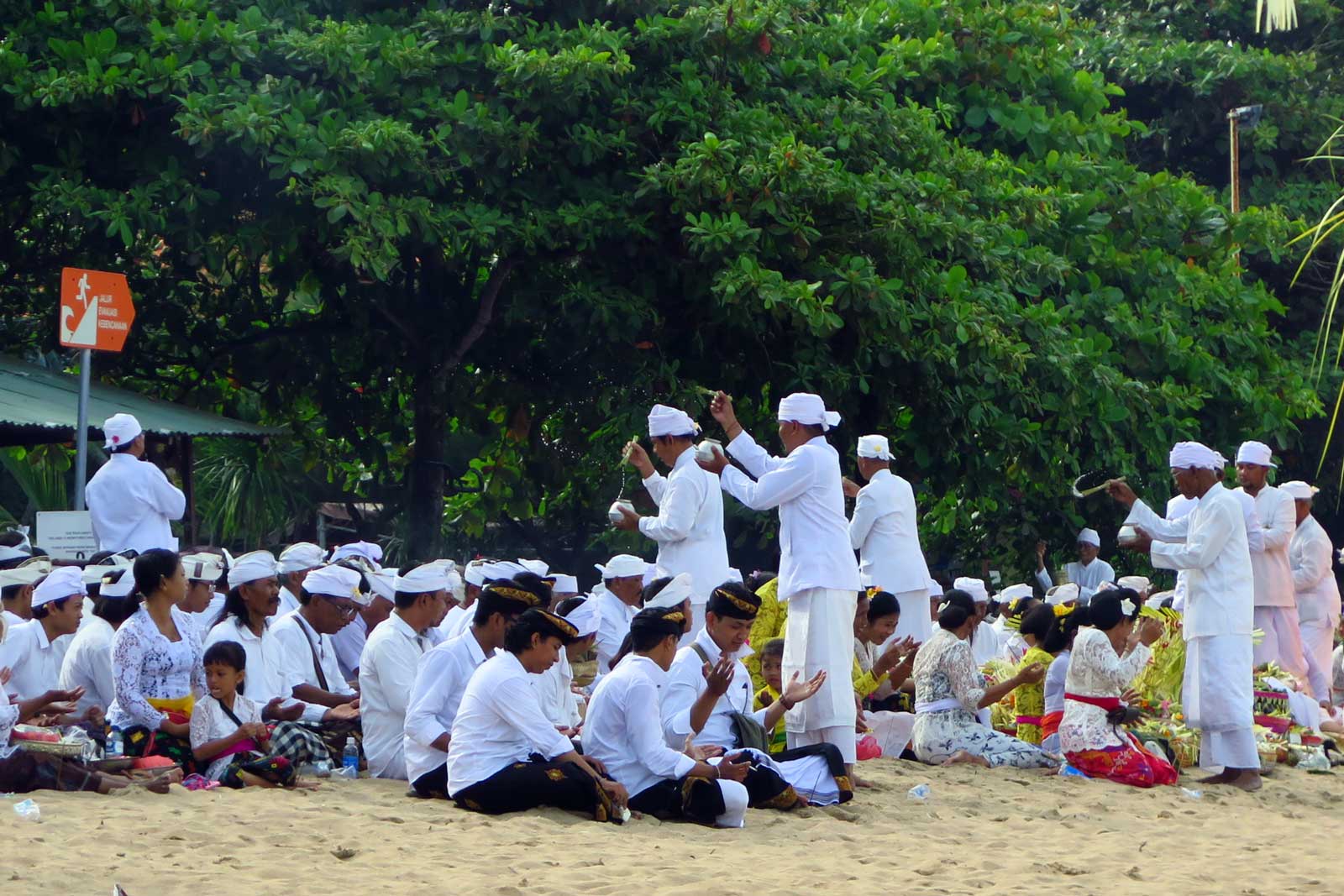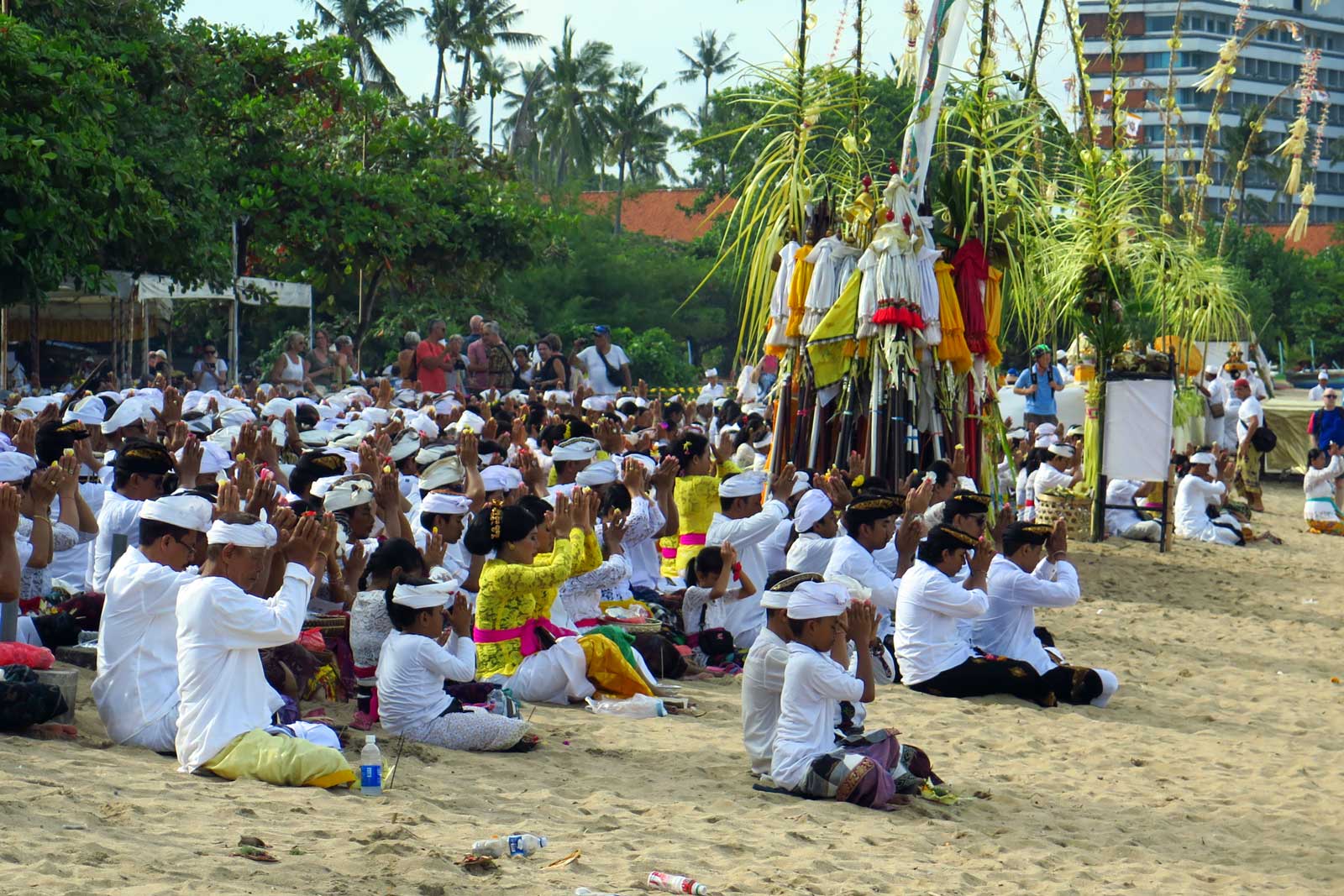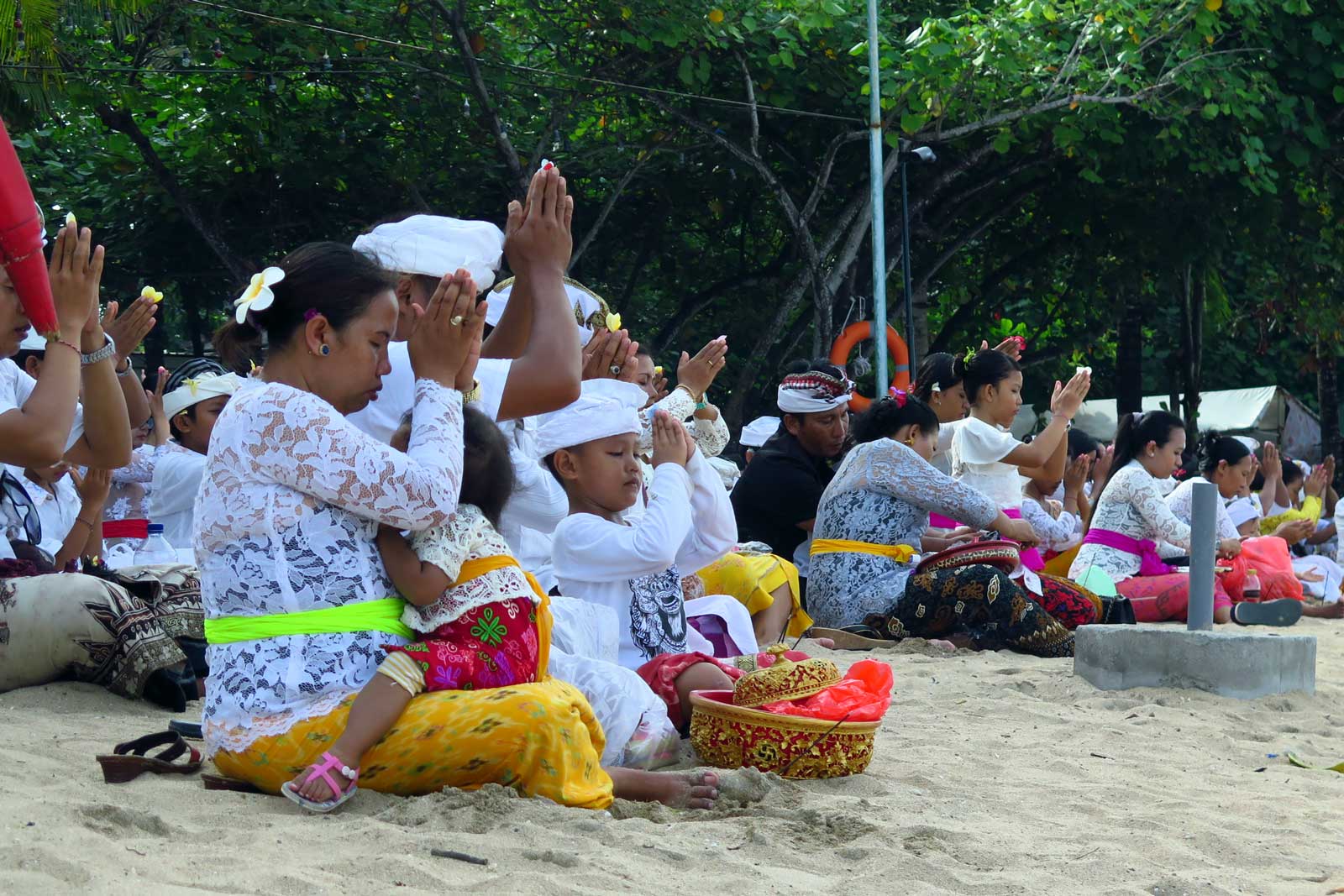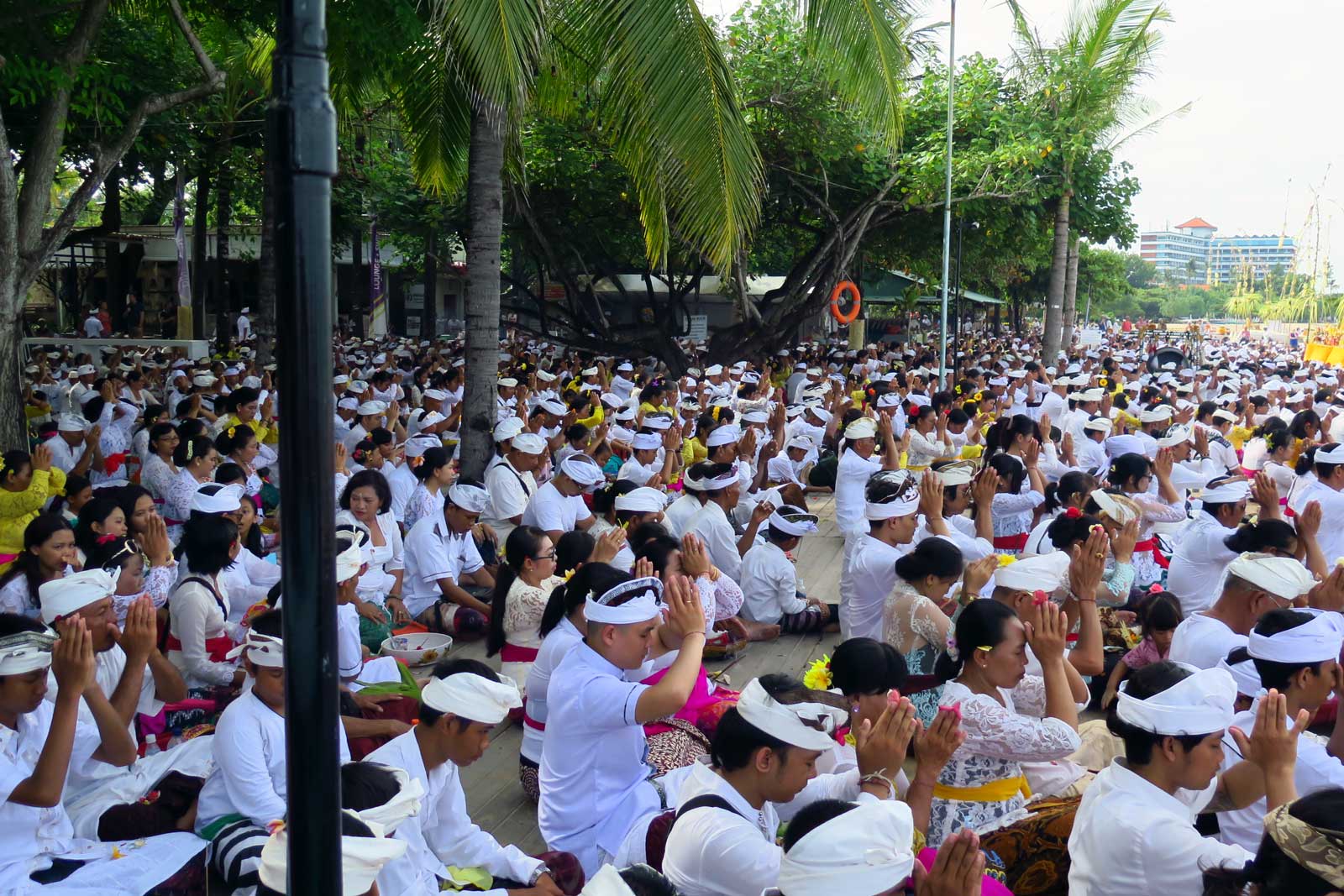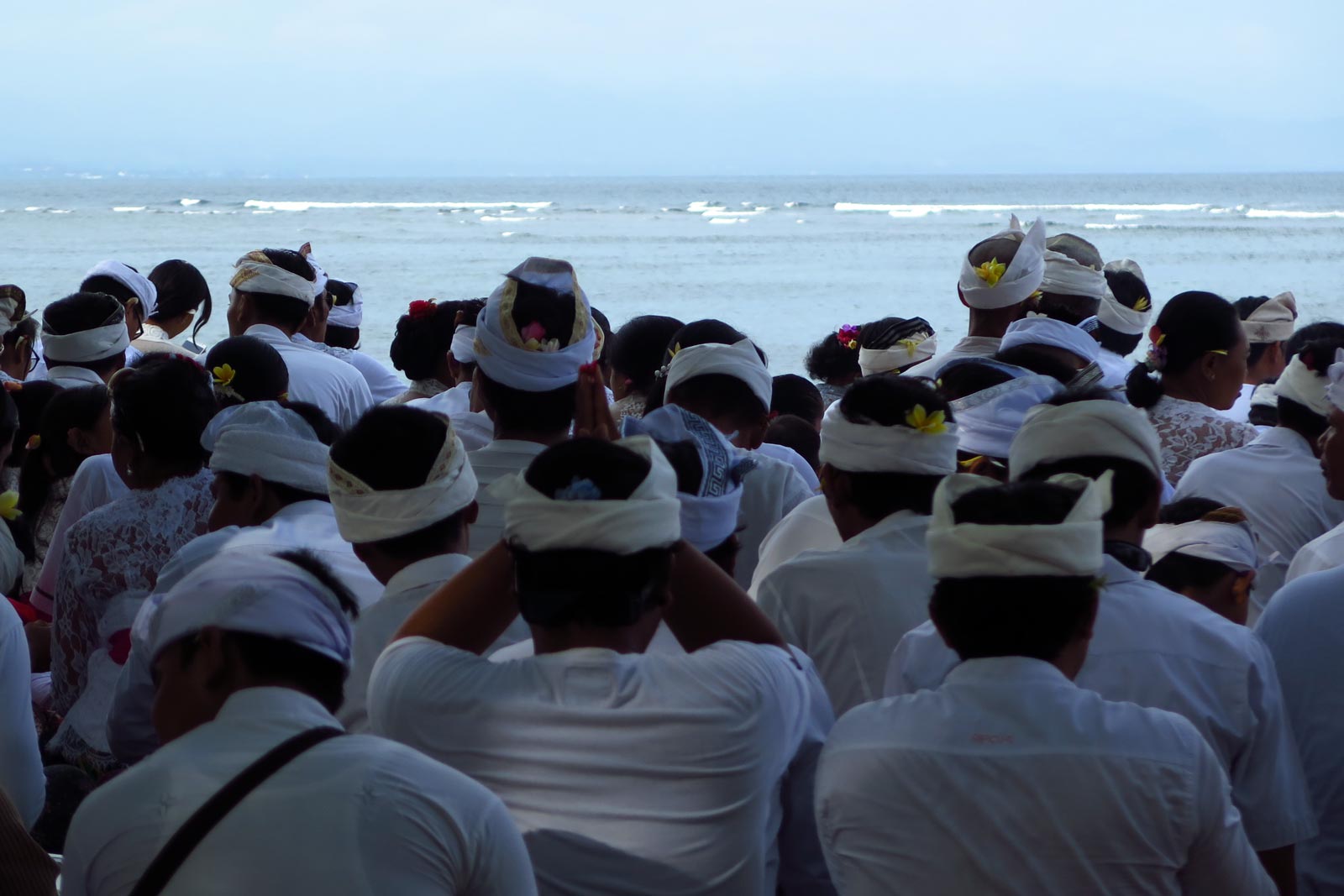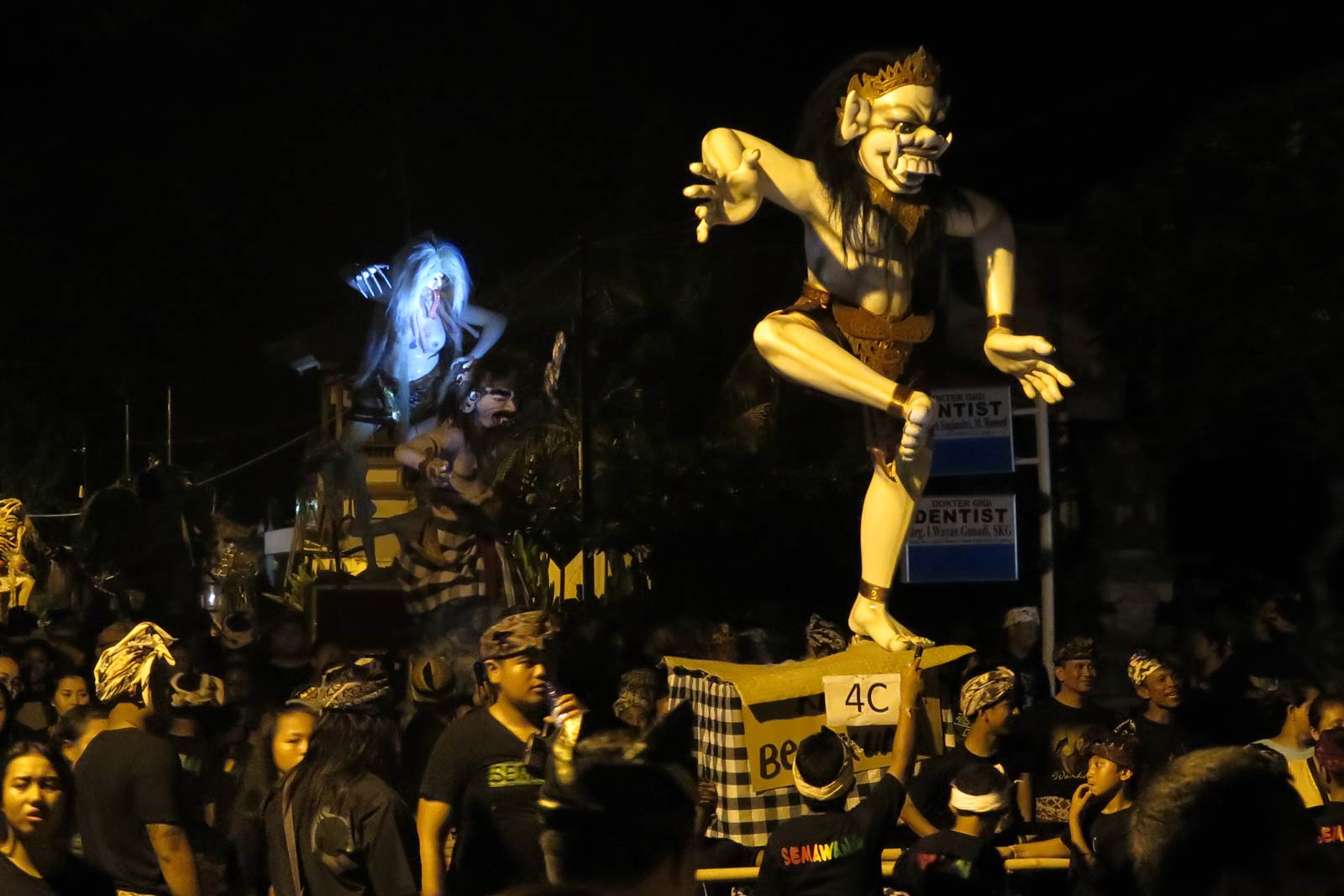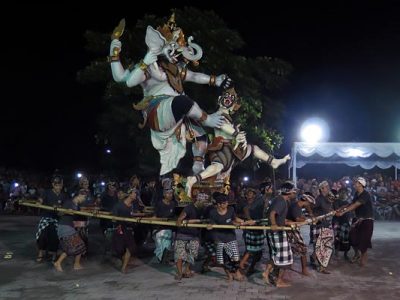Nyepi – The Calm After The Storm (Part 1)
The arrival of Balinese Hindu New Year is quite a celebration. From purification ceremonies and parading with ogoh-ogohs (huge figures to scare away evil spirits) to complete 24-hour silence all over the island, followed by youth’s kissing ritual.
This year, Nyepi falls on the 28th of March and it will be 1939. Preparations are full on and you can already feel it in the air (and traffic jams), that something special is going to happen. We’ll write about Balinese New Year celebrations in parts to keep the posts shorter and to share this year’s photos with you. In the first part we’ll take a brief look at different calendars that are followed in Bali and their importance in daily life. We’ll also write about preparations and ceremonies that take place before Nyepi.
Balinese calendars – everything has its right time
There are many calendars used in Bali, thus New Year is celebrated in different ways and more than once a year. The well-known Gregorius calendar is used for basic everyday purposes (counting weekdays and birthdays etc.) – seven days a week and twelve months a year. All traditional and religious activities are based on the 210-day Pawukon calendar and Hindu calendar (Caka / Saka) that follows lunar phases. As these calendars are used alongside and both are important, we’ll refer to them as Balinese calendar. The exact dates of most Balinese holidays change from year to year, as they’re base on different calendar systems.
Balinese have a great number of holidays and celebrations. Temple anniversaries (ca. every 6 months), lunar phases, Galungan, special days devoted to health, knowledge, nature, animals, wealth, metal, precious stones and holy days devoted to Gods and Goddesses etc. Besides these regular holidays, many individual events must be held on certain days. For example, suitable days must be chosen for wedding and cremation ceremonies, tooth filing rituals and for the beginning of house building.
While Chinese New Year and December 31st are also celebrated, the most significant celebration takes place on the arrival of Hindu New Year. Several rituals from cleansing ceremonies and loud parades to complete “shut down” of the island for 24 hours are held over almost a week.

General rundown of Balinese New Year celebration
Nyepi is one of the most important holidays in Bali. It falls on the first new moon in March or April and is celebrated over many days. The main dates of this year’s (2017) celebrations are:
- 24. – 26. March – purification ceremonies (Melasti). Cleansing of minds and sacred temple objects with holy water on the beach or by rivers / lakes.
- 27. March – day before the silence (Pengerupukan). Ceremonies to get rid of negative energies and parading the streets with ogoh-ogohs to scare the evil spirits away from the island.
- 28. March – the last day of the year (Nyepi). The day of complete silence, Bali is “closed” for 24 hours. Nature rests from human activities and it’s time for introspection.
- 29. March – the first day of the year (Ngembak Geni). Bali wakes up again. People visit their family and friends, asking one another for forgiveness of any past mistakes (in Denpasar, the youngsters of Kaja Sesetan community are also enjoying a kissing ritual).
Melasti – purification of mind and sacred objects
Purification ceremonies are held a few days before Nyepi. Balinese communities take their temple’s sacred objects and head to the beach (or depending on the location to a river or lake) for praying, to clean and neutralize themselves and their temple’s artifacts with holy water. Water is an important element in Balinese beliefs, symbolizing purity and wholeness. More than half of the Earth is covered with water, over 50% of our bodies are water and water was our first environment in mother’s womb. Newborn babies are considered to be the most pure and innocent, as they’ve been protected from the world’s evil manifestations. Before praying, Balinese priests will sprinkle people with holy water to dispel negative energies and achieve a pure doorway to the God.
Preparations start early in the morning. You’ll probably encounter processions to the beach during the day. Everyone is wearing beautiful traditional clothes, women are carrying offerings on their heads (fruit, flowers, rice etc.) and men are carrying bigger temple objects. There are also musicians with bells, drums, gongs and bamboo flutes, playing traditional music (gamelan).
TIPS: If you’re in Bali during Nyepi and don’t want to miss this unique spectacle, ask the locals 3-4 days before Nyepi, when and where will the Melasti ceremony take place. You might need to wake up pretty early.
If you have to get somewhere on time before Nyepi, you’ll probably cross roads with people going to the ceremonies. Temporarily closed streets, stopped traffic or driving at walking speed is quite common during these days. Plan more time for your travels and be patient.
Ogoh-ogoh – creature to get rid of evil spirits
Ogoh-ogohs are large figures that are used to scare evil spirits out of Bali before Nyepi. Most of the masterpieces represent evil mythological characters or fighting them. Some figures seem to be inspired by other topics. For example, a few years ago there was a huge turle parading on the streets.
Ogoh-ogohs are built by Balinese youngsters, from 5-6 year old boys to already grown-up guys. They start to build them a couple of months before Nyepi. Kids are usually going from door-to-door in their neighborhood to get donations for ogoh-ogoh – that’s clear reminder that Nyepi is getting close. Creatures are made of different light materials, as they carried during quite long parade. The most common ones seem to have “skeleton” of bamboo strips or wire, that covered with glued layers of paper or styrofoam. Over the last few years it’s great to see that Balinese youth is taking care of their island’s nature. Using only natural materials (leaves, branches, plants etc.) for ogoh-ogoh building is picking up popularity. In everyday life, plastic seems to be used on every possible opportunity and sadly, quite often plastic bottles, cups and bags get thrown out of car windows and end up on the streets.
Mastepieces are attached on bamboo frames, so it’s possible to lift them up with a group of people. In the evening before Nyepi, ogoh-ogohs are paraded through the streets to frighten evil spirits away.
You read and watch a video clip about ogoh-ogoh parade from our next blog post.
Come and join us on Facebook and Instagram , if you’d like to keep an eye on our photos, posts and offers. Check out Indonesian Language Cards to make your trip to Indonesia even more awesome.

